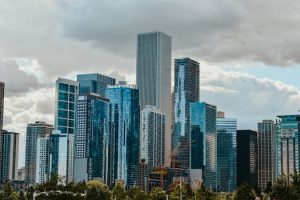The Great Reshuffling: How Remote Work is Changing Where We Live
With the rise of remote work, the way we live and work is changing in unprecedented ways. As more and more companies shift to remote work and employees have the freedom to work from anywhere, we are witnessing a great reshuffling of where people choose to live. This trend is not only affecting individuals, but also entire communities and cities. In this article, we will explore how remote work is changing where we live and the impact it is having on our society and economy.
The Shift to Remote Work
Remote work, also known as telecommuting or teleworking, is the practice of working from a location other than the traditional office setting. With the advancement of technology and the rise of digital communication tools, remote work has become a viable option for many businesses and employees. This has been further accelerated by the global pandemic, which has forced companies to adopt remote work as the norm.
According to a study by Flexjobs, the number of remote workers in the US alone has increased by 159% between 2005 to 2017. Additionally, a survey conducted by Gallup in August 2020 found that 33% of Americans are currently working from home, up from 25% in March 2020. This dramatic increase in remote work has given people the freedom to choose where they want to live, and has led to a significant shift in where people are choosing to reside.
The Great Reshuffling
As a result of remote work, people are no longer confined to living in close proximity to their workplace. They can now choose to live in a location that better suits their lifestyle, preferences, and budget. This has led to a great reshuffling, with people moving out of densely populated cities and into more suburban or rural areas.
For many, this has meant trading the hustle and bustle of the city for a quieter and more affordable living situation. Suburbs and smaller towns are experiencing an influx of new residents, as people seek more space and a lower cost of living. This trend is also benefiting areas that were previously struggling economically, as remote workers bring their jobs and income with them.
But it’s not just smaller towns that are seeing an increase in population. A report by real estate company Redfin found that popular vacation spots and scenic locations are also experiencing a surge in remote workers. With the ability to work from anywhere, people are choosing to live in places that provide a better quality of life, such as near the beach or in the mountains.
The Impact on Society and Economy
This great reshuffling has had a significant impact on both society and the economy. On one hand, it has led to a revitalization of some smaller towns and communities, bringing in new residents and creating a sense of community. It has also allowed people to pursue their dreams and have a better work-life balance, without being tied down to a specific location.
On the other hand, the shift to remote work has also highlighted existing inequalities in terms of internet access and housing affordability. Not everyone has equal access to reliable internet or the luxury of choosing where they want to live. This has led to concerns about rising housing costs in popular remote work destinations, making it difficult for low-income individuals and families to find affordable housing.
From an economic standpoint, remote work has also had a significant impact on businesses and the job market. Companies that have embraced remote work have seen a decrease in office-related expenses, such as rent and utilities. This has allowed them to invest more in their employees and has led to an increase in job opportunities, as companies no longer have to limit their search for talent to a specific geographic area.
The Future of Remote Work and Where We Live
The great reshuffling caused by remote work is far from over, and it’s uncertain what the future holds. As more companies continue to embrace remote work and make it a permanent option, we can expect to see a continued shift in where people choose to live. This will have a ripple effect on housing prices, local economies, and the overall landscape of our society.
The trend towards remote work has also sparked discussions about the future of cities. With more people leaving cities, will they become less crowded and more affordable, or will they adapt and offer more flexible living options to attract remote workers? Only time will tell, but one thing is for sure – remote work has opened up a new realm of possibilities for where we choose to call home.
In Conclusion
The great reshuffling caused by remote work is transforming the way we live and shaping our society and economy in unexpected ways. With the ability to work from anywhere, people are no longer limited to living in close proximity to their workplace. This has led to a surge of remote workers moving away from cities and into smaller towns and scenic locations.
While this trend has many benefits, it has also highlighted existing inequalities and raised concerns about the future of cities. As remote work continues to grow in popularity and become a permanent option for many, it’s clear that it will have a lasting impact on where we choose to live. The great reshuffling is not just a temporary phenomenon, but a reflection of the changing landscape of work and our society as a whole.





